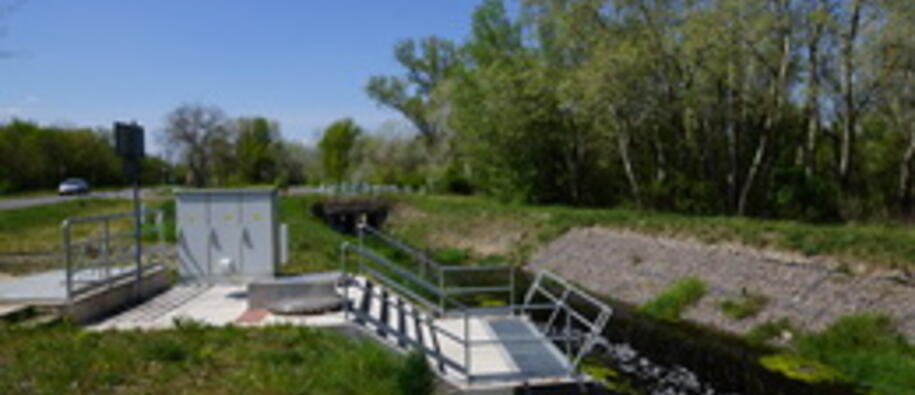Currently available funding
There are currently no calls for proposal.
Programme Summary
Why was the programme needed? In recent decades, changes in climate have affected natural and human systems, indicating the sensitivity of these systems to a changing climate. The evidence for human influence on the climate system has become more clear and greenhouse gas (GHG) emissions were the highest in history from 2000-2010. It is expected that in the 21th century surface temperatures will rise, heat waves will become more frequent and last longer. Additionally, extreme precipitation events will intensify and become more frequent in many regions, the ocean will continue to warm and acidify, and global mean sea level will continue to rise. Climate trend analyses in Hungary show unambiguous warming too. The country’s average monthly temperature normal value of 1981-2010 was 0.32˚C higher than the 1971-2000 normal value. Summers tend to get hotter, while the autumns are getting milder. The summer of 2015 brought five heat waves and several heat records and the first six months of 2016 were the hottest half of a year since record keeping began. Climate change reports for Hungary underline the need for more precise data on trends and effects, which may then serve as a basis for timely actions of adaptation. With a funding of 7 010 000 euro under the EEA Grants, the Hungarian Adaptation to Climate Change programme has increased the understanding and knowledge of climate change impacts and vulnerability. It has also promoted planning and action to increase resilience against climate change impacts at local and sub-regional levels. The Regional Environmental Center for Central and Eastern Europe (REC) served as Fund Operator for the programme. The programme was implemented in collaboration with the Norwegian Directorate for Civil Protection (Direktoratet for samfunnssikkerhet og beredskap – DSB) as a Donor Programme Partner. It consisted of the following three focus areas: • The National Adaptation Geoinformatic System. • Local climate change adaptation capacity building. • Pilot projects focusing on climate change adaptation measures at local and regional level. What did the programme achieve? The programme was in line with current EU policy to establish a common climate change adaptation strategy. At national level, the programme supported and enhanced the review and implementation of the National Climate Change Strategy (Act LV, 2007). Through the implementation of ten projects, the programme has established a geo-information system to provide a basis for identifying adaptation options at different levels in Hungary and increased Hungarian adaptation efforts through local and regional pilot projects. Moreover, they’ve carried out capacity building to mobilise and empower stakeholders and local-level decision makers, strengthened climate resilience by assessing community vulnerability, and demonstrated replicable examples for resilience enhancement at both local and sub-regional level. All ten projects either achieved or exceeded the aims, contributing with this to the success of the programme. Climate change negatively impacts all the systems which enable our existence and economic activity. Establishing an understanding of climate impacts and developing planning tools to minimise said impacts is vital for ensuring economic stability and the funded project activities, inter alia, aimed to reduce the costs of these changes. The programme contributed to this aim. Some of the main achievements in figures include: • Development of a National Geoinformation System (NAGiS) with over 900 data layers, providing a mapping system, establishing a database (GeoDat) and a metadatabase for its more than 6,600 users, including decision makers, scientists and academics • Increase in water-related resilience building (e.g. flood protection, runoff, irrigation measures during drought, etc) for more than 37,000 inhabitants. • The increased water retention and capability and water access is crucial for the agricultural, touristic and economic development of the regions affected by aridification. The project activities have resulted in retained water volume of 150,000 m3, inland water treatment on 17904 ha, water scarcity management on 27,000 ha. • Constructions of 1797 fm pressure pipes, 5 sluices, 3 dams, and 1 mathematical model for precipitation management, 18 km canal system reconstruction. • Local climate change adaptation training for 491 people, which has enabled the programme to reach 4 million persons, transferring knowledge on how to develop measures and actions to increase resilience at local and sub-regional levels. All three focus areas of the programme are related to various aspects of social issues and sustainability. The development of the NAGiS system, with its social, health and economic data input, provides insight into the vulnerability levels of populations in different areas of the country, thereby enabling policy makers to take into consideration the impact of climate change on social differences. Moreover, the NAGiS can be used in the planning process of Hungary’s Intended Nationally Determined Contribution (INDC) under the Paris Agreement as well as to develop adaptation measures under the United Nations Framework Convention on Climate Change (UNFCCC) process. The capacity building exercise increased social impact-related awareness at local level, both for stakeholders and authorities. The development of the NAGiS – especially its meta-database – complies with the EU INSPIRE Directive’s legislative requirement to ensure appropriate technology. The pilot projects increased the well-being of local populations within project areas, strengthening water retention capability and increasing water access despite of aridification trends. How was bilateral relations strengthened? Strengthening bilateral relations between the donors and the beneficiary country was one of the priority activities of the Fund Operator. The Norwegian Directorate for Civil Protection played a key role in facilitating the involvement of Norwegian and Icelandic stakeholders in the implementation of the programme activities. Due to the extensive initiation of bilateral cooperation possibilities, more than 20 activities were implemented, starting from attending meetings to organising workshops, conferences, study tours and so forth. In the programme, bilateral relations have enabled decision-makers, scientists and community stakeholders to share experiences, lessons learned and good practices, as well as the establishment of long-term cooperation between government institutions, experts, local governments and regional agencies in Hungary, Norway and Iceland. The joint conferences, seminars, workshops and study tours served as meeting points for the three countries involved. Networking amongst the participants have contributed to strengthening human and bilateral relations, and led to joint projects and/or proposals to combat harmful effects of climate change and develop methods and tools for adaptation at national and local levels. Examples of successful bilateral activities in the programme are: • The Mórahalom local government signed a sister city agreement with the Norwegian municipalities Evje og Hornes. The representatives of the municipalities met several times during the programme period and identified multiple challenges for future collaboration in the local fight against climate change, including city planning, water management, renewable energy sources, and tourism. • The Hungarian Meteorological Institute signed collaboration agreements with Bjerknes Centre for Climate Research and with the Norwegian Meteorological Institute – and the parties have agreed to work together on climate data homogenisation and interpolation, and to cooperate in developing successful project applications, like “Climate monitoring products for Europe based on Surface in-situ Observations (C3S SURF), 2017-2020” and “Data Evaluation for Climate Models (DECM), 2016-2018”. What will be the impact of the programme? The programme succeeded in providing local stakeholders, authorities, members of the scientific community and the general public with an enhanced understanding of local impacts of unavoidable climate change, as well as providing capacity building and information at local level regarding climate impacts. It also supported on-the-ground action showing how long-term adaptation, enhancing both human and social development, can be realised in a cost-effective manner. The programme initiated and supported activities and actions that are missing in Hungary and which will have a long-term impact. The success and long-term impact of the Adaptation to Climate Change programme is proved through the continuation of project activities after the end of the project implementation period. All projects are implementing or have planned continuing activities. Some activities will continue with EU funding. In 2016, under (KEHOP 1.1.0) a call for proposal was launched on planning, monitoring and IT system development related to the effects of climate change and water management. The promoter ‘GGIH’ of the NAGiS project which was supported under the EEA programme (HU04-0001) will continue to implement a priority project called “Further development of NAGIS” under the EU-funded Environmental and Energy Efficiency Operational Programme for 2014-2020 for the amount of approximately 1.3 million euro. The EU-funded Environmental and Energy Efficiency Operational Programme for 2014-2020 also includes a call for proposal on “Methodology, capacity building and awareness raising for developing Climate Strategies”. Applicants under this call can also utilise the outcomes and lessons learnt from the local capacity building projects under the EEA Adaptation to Climate Change programme, especially to develop further strategies to combat the impact of climate change.

